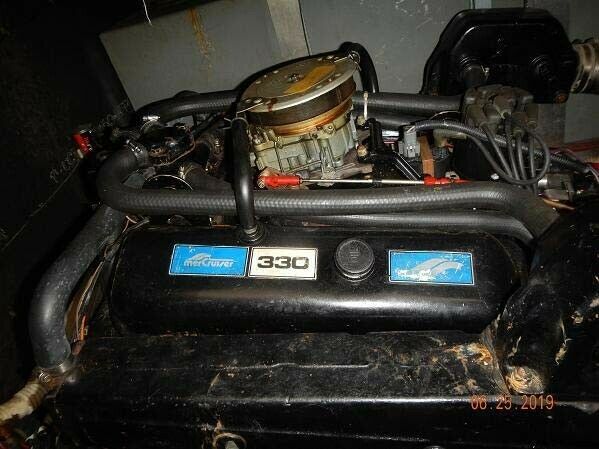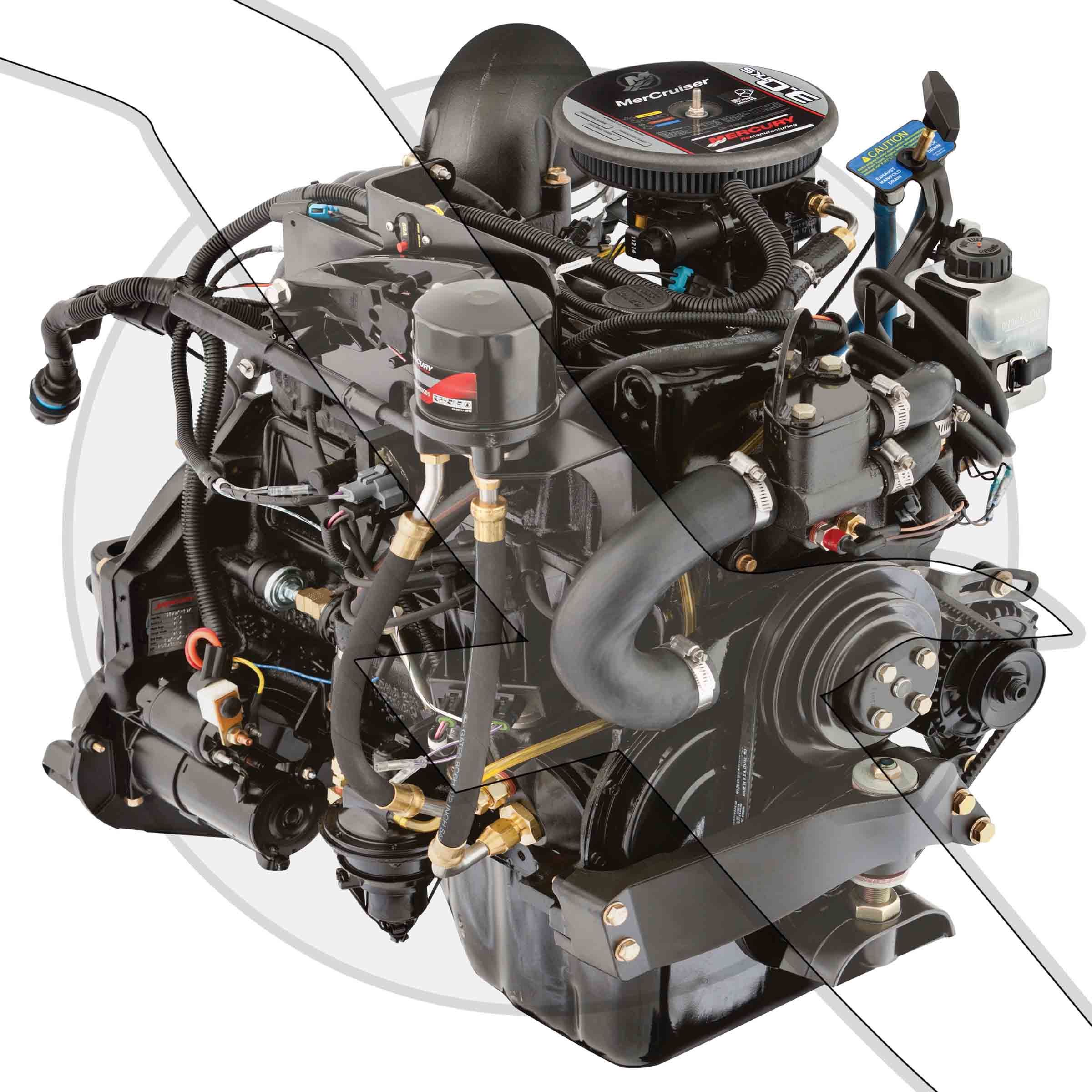

The throttle body opening faces aft so that intake noise is not aimed directly at the cockpit. A key feature is the design of the long-runner scrolled intake manifold, which boosts torque by packing more air into the combustion chambers. The 6.2L engine weighs 862 pounds, or about 23 pounds less than the 6.2-liter MerCruiser 377 MAG engine it will replace.Īn intake Helmholtz resonator (visible here in clear and red cut-away) between the flame arrestor and throttle body reduces intake sound on the MerCruiser 6.2L engine. The engine will be offered with either raw water (open) or freshwater (closed) cooling. All other components are aluminum or composite, according to Mercury. We selected light-weight connecting rods and pistons, fitted low-drag piston rings, limited oil drag on the crankshaft, and because we are designing our own engine, were able to manage details like selecting the optimal bearing sizes.” Components that come in contact with raw water-the engine block, cylinder heads and exhaust-are cast iron.

“We started with sufficient displacement and then designed an engine with a focus on eliminating the friction that results in parasitic power loss.

“The V8 is the same premise as the V6,” says Foulkes. Foulkes says that like the 4.5L V6, the new 6.2L is based on an iron block cast to Mercury specifications. And so, that clean sheet of paper, or rather a blank CAD screen, was the starting point for the MerCruiser 6.2L V8. Those GM engines are being marinized by Volvo Penta, the chief rival to Mercury in the sterndrive market. And the latest engines being offered by GM Powertrain, including its LV1 4.3-liter V6 and L83 5.3-liter V8, feature all of those technologies. A marine engine, by comparison, has to cruise at perhaps 75 percent throttle.” While Foulkes recognizes the value of technologies like variable valve timing, all-alloy construction and direct fuel injection in the automotive arena, he feels that due to cost and complexity, those features are of little advantage in a boat. “When you think about driving your car or truck, you spend most of the time at 10 to 15 percent throttle. “New automobile engines are designed to work best at a very light load,” said Foulkes. Today fuel mileage is the primary focus of auto engine development, according to Foulkes (who is a former Ford powertrain chief engineer), even for the light trucks typically powered by the engines sourced for marine duty. For generations the marine industry has relied on “marizined” versions of automobile engines, primarily sourced from GM Powertrain and Ford, for its gas inboard and sterndrive engines. At the recent media introduction of the MerCruiser 6.2L MPI, Foulkes repeated the assertion he made last year when Mercury launched the 4.5L engine-that Mercury sees little benefit for the marine industry in many current and emerging automotive engine designs. Note the deep tray around the oil filter to contain drips when changing the filter. So you can enjoy easy maintenance, low cost of ownership, and true peace of mind.A marine-specific design places all common service points on the front of the MerCruiser 6.2L. Each drive is designed, built, and tested to deliver best-in-class reliability. Working together to give you better performance. MERCURY DRIVESįor every high-performing Mercury® MerCruiser® or Mercury Diesel engine, there’s an equally high-performing drive.

Our extensive range of sterndrive, inboard and tow sport engines is the most comprehensive lineup in the industry, all engineered to provide the best possible boating experience. No matter what type of boating interests you most, Mercury® MerCruiser® can power it better than anyone else.


 0 kommentar(er)
0 kommentar(er)
